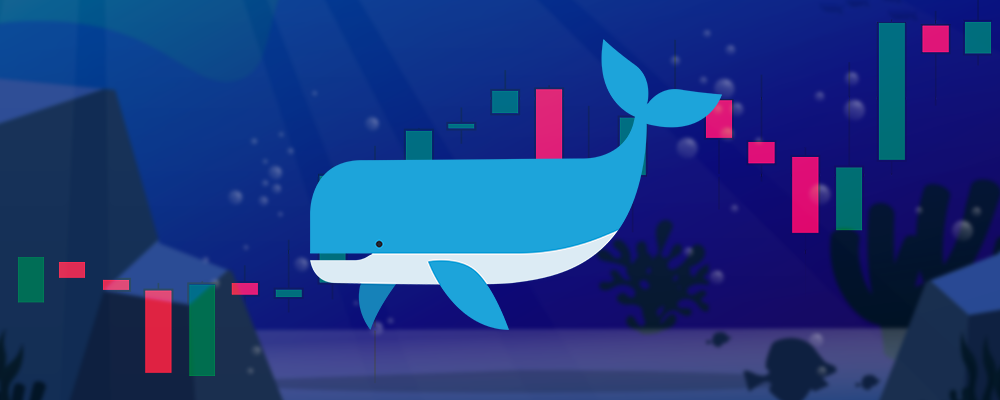How Crypto Whales Trade
Market Meditations | March 18, 2021

Let’s Go Crypto Whale Watching
? This section of today’s newsletter is made available to our premium community only.
There is a never-ending power struggle between the retail-investing masses and a smaller number of deep-pocketed institutional players (or ‘Whales’) who often seem to have an unfair advantage. A whale is crypto and Wall Street jargon. It just refers to a large investor whose buying (or selling) might make big waves (or impact) in the market ?
Eliminating that unfair advantage comes down to knowledge. And so in this article, we’ll dive into how whales trade the crypto market and how you can best leverage this information as a retail investor ✅
Comparing the Retail and Whale Trading Tools:
1️⃣Retail: Limit Orders
A limit order is an order to buy or sell a security at a particular price. ?️ Limit orders guarantee your execution price but do not guarantee that you will be filled. You could submit a limit order, but if the market never comes to your price, it may go unfilled. Note, all limit orders are publicly visible in the orderbook. Use limit orders if you want the best price ✅
❌Crypto whales rarely use limit orders. Let’s assume a whale would like to purchase 10K worth of ETH at $1700 ETH/USD. This means he needs 10K ETH to be sold to him at $1700. He could submit a limit order. However since this order is visible to other traders, they will begin placing their orders above $1700 and front run the whale ☹️ When sellers see a whale holding the bid at $1700, they get greedy ? since they know buyers are present, so they raise their ask price. In short, the whale will not be filled at $1700 and will be forced to chase the price up ?
2️⃣Retail: Market Orders
A market order is an order to buy or sell a security instantly ⏰. Market orders guarantee an order fill but do not guarantee an execution price. When you submit a market order, you will be filled directly from an order in the orderbook. Use market orders if you’re willing to buy at a higher price in exchange for an immediate fill ✅
❌Crypto whales rarely use market orders. A whale could submit a market order for 10K ETH. Chances are, however, that nobody is selling 10K ETH at $1700, which means the whale would be filled only partially at $1700. The rest of his order will be filled at significantly higher prices. ?This is known as slippage and occurs when there are not enough sell orders to fill a buy order at a certain price ?
3️⃣Whale: OTC (over-the-counter) Desks
This is the whale weapon of choice. They often work with OTC (over-the-counter) desks. Whales can submit a request to an OTC desk for 10K ETH at $1700. A desk can source big amounts of crypto because they have access to more liquidity. ?
How Can Retail Traders Profit From Whale Activity?
Once whales have their crypto, we can analyse data ?on their positions to get a glimpse of market direction. Let’s discuss 3 metrics in particular:
- Funding Rate is a popular tool that shows an imbalance between longs and shorts ? A negative funding rate means that shorts pay longs whereas a positive funding rate means longs pay shorts. A high funding rate often precedes a market drop whilst a negative funding rate can be good confluence with your TA to go long.
- Exchange Flow data helps us gauge whether whales are accumulating or distributing: if a lot of ETH, for example, is moving onto exchanges, this could signify that whales are looking to sell their coins ? If you’re in a long position and notice a big exchange in-flow you may look to have a tighter stop loss and protect your capital in the case of a correction (check out Whale Alert to see these types of transactions in real time and CryptoQuant for more on chain data. Use this information as a supplement to your TA and risk management).
- Open Interest is another valuable metric to track what big money is doing ? Open interest refers to the total number of outstanding contracts that are yet to be settled. Open interest, like volume, is used to gauge the strength of a trend. Increasing open interest suggests that big money is adding to their position and the current trend is strong. In contrast, decreasing open interest suggests that whales may be closing out positions and the current trend is weakening.
Remember, trading with whales ? rather than against them is how to maximise profit! Looking at this kind of data as a supplement to your TA can help you develop your trading edge.

